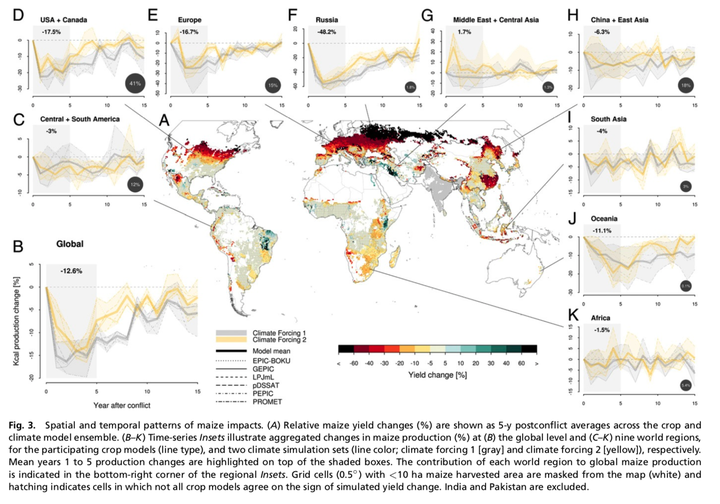
Abstract
A limited nuclear war between India and Pakistan could ignite fires large enough to emit more than 5 Tg of soot into the stratosphere. Climate model simulations have shown severe resulting climate perturbations with declines in global mean temperature by 1.8 °C and precipitation by 8%, for at least 5 y. Here we evaluate impacts for the global food system. Six harmonized state-of-the-art crop models show that global caloric production from maize, wheat, rice, and soybean falls by 13 (±1)%, 11 (±8)%, 3 (±5)%, and 17 (±2)% over 5 y. Total single-year losses of 12 (±4)% quadruple the largest observed historical anomaly and exceed impacts caused by historic droughts and volcanic eruptions. Colder temperatures drive losses more than changes in precipitation and solar radiation, leading to strongest impacts in temperate regions poleward of 30°N, including the United States, Europe, and China for 10 to 15 y. Integrated food trade network analyses show that domestic reserves and global trade can largely buffer the production anomaly in the first year. Persistent multiyear losses, however, would constrain domestic food availability and propagate to the Global South, especially to food-insecure countries. By year 5, maize and wheat availability would decrease by 13% globally and by more than 20% in 71 countries with a cumulative population of 1.3 billion people. In view of increasing instability in South Asia, this study shows that a regional conflict using <1% of the worldwide nuclear arsenal could have adverse consequences for global food security unmatched in modern history.